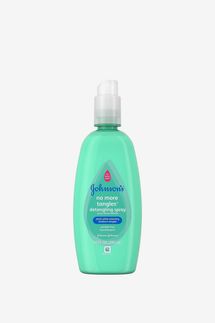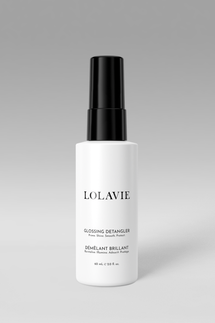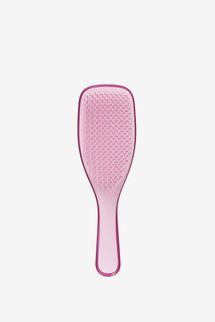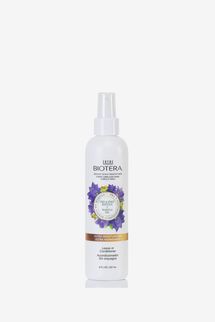
Dear Beauty Editor,
Once and for all, is it okay to brush your hair when it’s wet? I feel like all the tips I see say that it damages your hair. But if you air dry, what are you supposed to do? Brushing it when dry would ruin the style.
—Anon.
There aren’t many beauty questions I can answer “once and for all” because knowledge is always evolving, new products come out all the time, and — most important — not all advice is universal. This is one of those situations where the answer depends on your hair type, according to trichologist Angela Onuoha. She says dry brushing is better for straight and wavy hair, but “for curlier textures, brushing it wet is healthier.” Let me explain why and then we’ll move on to more practical matters.
Healthy hair is strong and flexible because of the multiple types of chemical bonds in its protein structure. One bond type, the hydrogen bonds, will temporarily break in the presence of water — making hair more elastic — and then reform as your hair dries. If you have straight or wavy strands, the increased elasticity makes your hair more prone to breakage when wet than when dry. But in curly and textured hair, a little extra elasticity is actually a good thing. At each point where the hair structure bends or curls or coils, it’s slightly weaker. When curly and textured hair is dry, there are tons of these “snapping points,” as Onuoha calls them. But when the hair gets wet and the curl shapes soften, there are fewer snapping points. “That makes the hair easier to glide through, which prevents more breakage in comparison to dry brushing,” Onuoha says.
And glide is what you want. It’s why hair experts always tell you to use products — they’re not just trying to sell you stuff! All products add some level of slip, which makes it easier (and less damaging) to brush your hair. On the slick continuum, conditioners and detanglers usually have the most slip, followed by leave-in conditioners, oils, and serums, then gels, mousses, and styling sprays. But every brand formulates differently, so you have to experiment to find the sweet spot: a product that has enough slip for your needs but not so much that it affects your finished style negatively. (Johnson’s No More Tangles leaves my slightly wavy, medium-thick hair looking like overcooked spaghetti, but Lolavie Glossing Detangler is *chef’s kiss*.)
The brush and technique matter too. In general, whether you brush wet or dry, you want to detangle with widely spaced, flexible bristles. “I personally love the Tangle Teezer brushes,” says Onuoha. The Strategist writer Natasha Marsh says this kid’s brush cuts down her detangling time. And my current favorite is the Wet Brush (no, your hair does not have to be wet to use it). Brushes with hard bristles or that are designed to grip and stretch strands (like those with tightly packed boar bristles) are better for styling and shaping than for brushing all the way though and detangling. As for the technique, trichologist and hair stylist Shab Caspara suggests “beginning with the ends and working your way up to prevent as much tangling and tension as possible.” (Her product of choice? The Biotera Leave-In Conditioner.)
Armed with the knowledge above, you can figure out when (and how often) to brush for optimal health. If you have curly or textured hair, you may only brush through it when you condition your wet hair, however often that is. If you have straight hair and use a shine spray or serum, you can brush your dry hair daily. And if your hair is wavy and you air-dry, you may want to use an oil or detangling spray right before you shower, brush your dry strands, then wash your hair, being careful not to introduce new knots as you shampoo and condition.
It’s great to get inspired by all the content and advice online, but don’t assume that one tip from a hair stylist or a how-to video from that content creator whose hair looks like yours will work for you. It takes patience and experimentation to find a styling strategy you like, and your hair is constantly changing, so the products and brushes you used a year ago may no longer work today. That’s why flexibility is a good thing — in hair and in life.
Some products that can really help with detangling:
Send your questions to [email protected]. (By emailing, you agree to the terms here.)






